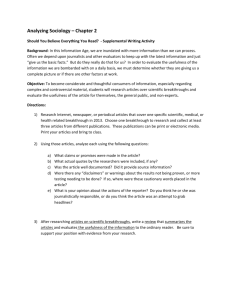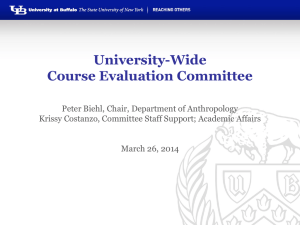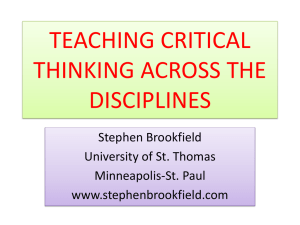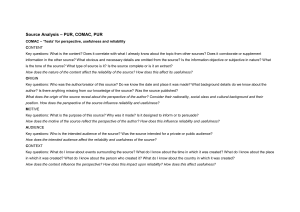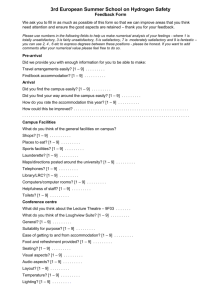PowerPoint for the MUSIC Model Overview
advertisement
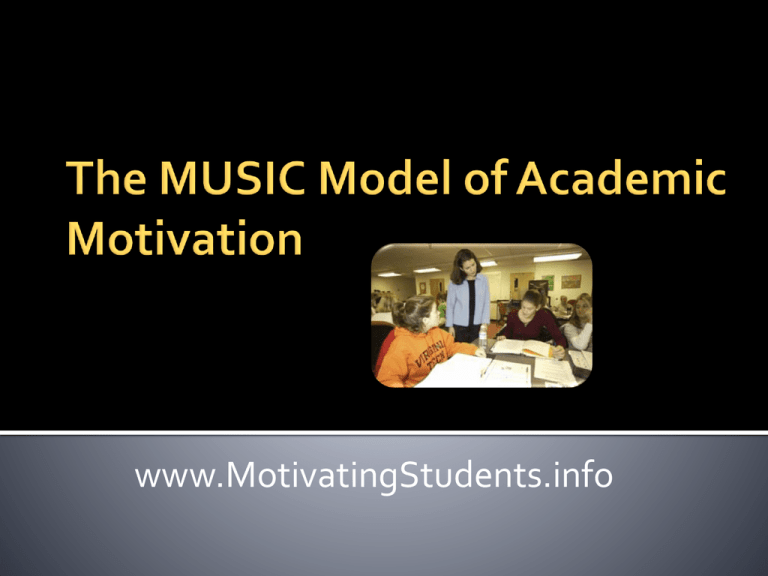
www.MotivatingStudents.info Instructor creates motivating conditions Students become engaged in the process Students learn more Instructor meets students’ motivational needs Instructor creates motivating conditions: • eMpowerment • Usefulness • Success • Interest • Caring Students become engaged in the process Students learn more eMpowerment Usefulness The model consists of 5 primary components and is based on research and theories Success Interest Caring Instructors need to ensure that students: eMpowerment believe that they have some control over some aspect of their learning Usefulness understand why the content is useful Success believe that they can succeed if they put forth the effort Interest are interested in what they are supposed to be learning believe that the instructor cares about whether they meet the course objectives Caring 1. Do students believe that they have control over some aspects of their learning? Example: Providing choices 2. Do students believe that the instructor empowers them and does not try to manipulate their behavior? Example: Providing rationales for rules/directions 1. Do students understand why what they are learning is useful to their interests, to their career goals, and/or in the “real-world”? Example: Explicitly explaining the usefulness Example: Providing activities that demonstrate usefulness 1. Do students understand the instructor’s expectations of them? Example: Having explicit grading criteria 2. Do students find the learning activities challenging in that they are not too hard or easy? Example: Dividing complex learning activities into sections 3. Do students receive regular feedback about their level of competence? Example: Providing opportunities for regular feedback 4. Do students believe that they can succeed if they put forth the effort? Example: Providing a “study tips” guide 1. Do students demonstrate a situational interest in the course activities? Examples: Using novelty, social interaction, games, humor; engendering emotions; varying learning activities; providing surprising information 1. Do students believe that the instructor cares about whether they achieve the course objectives? Example: Devoting time to helping students academically 2. Do students believe that the instructor cares about their well-being? Example: Making reasonable accommodations for extraordinary events eMpowerment Usefulness Success Interest Caring A full explanation of the model is provided in the following article linked to the Research page at www.MotivatingStudents.info Jones, B. D. (2009). Motivating students to engage in learning: The MUSIC Model of Academic Motivation. International Journal of Teaching and Learning in Higher Education, 21(2), 272-285. Also: http://www.isetl.org/ijtlhe/pdf/IJTLHE774.pdf

